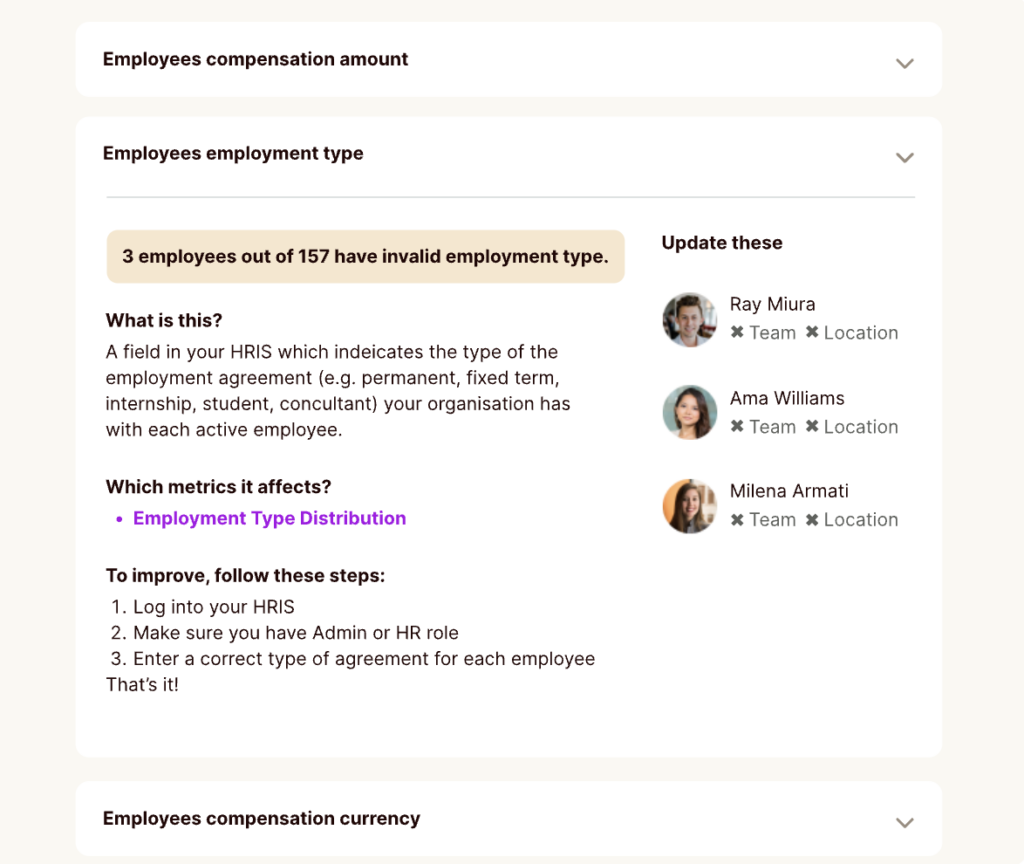HR leaders still feel the pressure to perform at both operational and strategic levels, while their workload increases. Here are three use cases where AI helps reclaim more time and focus and direct it toward the design and integration of critical HR initiatives.
The ROI of HRBPs’ strategic work
It’s no secret that an HR business partner who is empowered to focus on strategic initiatives has the power to drastically impact an organization’s bottom line. Such a high-performing professional often improves employee performance by up to 22% and employee retention by up to 24%, according to Gartner. As a direct result, revenue increases by up to 7% and profit – by up to 9%.
However, it is incredibly disappointing to know that most of the HRBPs’ potential is being blocked by individual employee matters and repetitive operational activities, which take up about 80% of their working hours.
We know that HRBPs around the world stepped up to the plate and managed new programs effectively during the Covid-19 pandemic, on both operational and strategic levels.
Still, despite their vital contributions, 57% of the C-suite executives surveyed by Sage after the pandemic still viewed the HR function as predominantly administrative.
The picture is clear: HR leaders are still feeling the pressure and responsibility to perform at both levels, operational and strategic, while their workload increases. And no time management technique is able to free up their calendars enough so that they can bring their most productive selves to the executive table.
HR as a function requires a new, scalable solution.
In this piece, we explore how with generative AI for HR, HRBPs reclaim time and focus away from the unsustainable tasks that inadvertently fall under the traditional umbrella of the HR function, and direct it toward the design and integration of critical HR initiatives.
If you are an HR business partner or HR leader who is open to a better alternative to this grind, read on.
Below, we detail several tried and tested solutions, for challenges that you might deal with too.
- Challenge 1: The CEO asks you for a simple explanation to a complex problem.
- Challenge 2: From raw data to insightful reports, the road is windy.
- Challenge 3: How to make your voice heard in important company decisions.
Challenge 1: The CEO asks you for a simple explanation to a complex problem.
“I haven’t even finished my coffee this morning, when our CEO casually asked me yet another why question: “Why are our people leaving?”. He then went on, observing that “52 people left the company this year. That’s way more than last year and we’re even giving off bigger salaries now”.
They may expect a simple answer, but you don’t have it – definitely not before your first coffee, anyway. You try to take a step back and consider the full context, so tens of questions arise:
- How satisfied have the employees been this year?
- What are the major events that might have prompted them to leave?
- Could we have known their reasons for leaving, well in advance?
- If we knew their reasons, would we have been able to prevent them from leaving?
- Would we have wanted to prevent them all from leaving?
These are all questions that need past data.
Such a big event could’ve only been avoided if the company put in place ways to measure the employees’ thoughts and behaviors, through surveys and qualitative interviews.
Let’s say you’d already gathered such data from the employees.
Then, you’re halfway to a complete answer.
However, the more employees and departments the company has, the more difficult it becomes to single out one or a couple of causes for the talent drain.
For example, maybe two specific departments were disproportionately affected, or maybe the ex-employees had a certain group of managers who weren’t managing efficiently. Who knows?
Find the why in a matter of minutes
The plan you’d had for the day doesn’t have to go out the window, to accommodate your CEO’s burning question.
You don’t have to manually sift through the data, looking for patterns, or explaining the whole situation to a data analyst.
Instead, you can carry on designing that performance review process, or your DEI initiative — right after you get a little help from your AI friend.
Often, at Orgnostic, when we’re not sure what to do with all the employee data and need answers quickly, we rely on a generative AI feature we call “the people analyst in a box”.
It integrates seamlessly with Slack and you can ask it the question you have, in plain English. It answers based on both your own company’s data and a wider knowledge base. Whichever solution you choose, make sure it can help you pick the right analytics to perform on your dataset, as well as interpret the results.
Challenge 2: From raw data to insightful reports, the road is windy.
“All I wanted was to help the company create a better environment for its employees. I could already imagine my shiny red superhero cape blowing in the wind, as I walk into the next executive meeting with a solid proposal, based on all our employees’ wishes. I’ve already sent out a comprehensive survey to everyone. Now that the results are back, I’m wondering… is my benevolence going to get me into trouble? All this data is not going to clean and interpret by itself!”

It’s hard, if not impossible, to identify what could go better about your employees, without first tracking a few critical metrics and analyzing them.
And it is clear that reports are indispensable for any business proposal to be accepted and for any evidence-based intervention to be successful.
Automate the care for data health
Please don’t handle all the employee data manually.
Your extreme care and attention to detail are probably why so many employees feel comfortable opening up to you, but that doesn’t mean you’re the one who has to make sense of the data with the same level of commitment.
Instead, find yourself a tool that handles data automatically.
Some tools even tell you immediately how clean the data is, as well as how reliable your insights are.
If you have to provide weekly, monthly, or quarterly reports on the same type of data and you’d like to stop wasting time on manual data health checks every single time, then do consider our HR data health capabilities.

Challenge 3: How to make your voice heard in important company decisions.
“A big part of my role is reminding people that data about our employees (their job satisfaction, performance, or compensation package) needs to be analyzed and interpreted with a lot of consideration for the bigger picture. And that sudden internal policy changes might blur this picture even more. Leadership meetings often feel like make-it-or-break-it events, because I feel responsible for how well my colleagues understand the HR insights that I present to them. I can only hope that they will use this information outside of our meetings”.
Solution:
Leading an entire HR function is a complex undertaking as is.
On top of that, HR business partners are usually expected to track relevant metrics and KPIs consistently as their organization changes, draw insights from multiple sources, package them into executive summaries, and propose solutions.
While juggling all your responsibilities, you risk leaving aside a critical factor for your success at the company: involving your stakeholders all throughout your projects, so they feel invested and commit to developing the organization in a way that’s consistent with your findings in HR.
Have your stakeholders, such as team leaders, be automatically alerted when their attention is needed, based on custom HR dashboards, generated by an AI tool.
Then, they are more likely to become proactive and seek help for their teams’ HR challenges.
Once they are aware of these problems, it will be easier for you to support them.
For example, you can bring forth appropriate HR frameworks and collaborate with them to identify key strengths and areas of improvement within their teams.
Alternatively, once your organization’s leaders have access to such HR insights, they may approach you while having a nuanced understanding of their challenge.
At that point, you will be able to focus less on troubleshooting and interpreting the data yourself, and more on spearheading initiatives and creating action plans.
Two other important uses of AI-generated HR dashboards are target setting and scenario planning. You can create simple “what if” scenarios and estimate how different HR metrics (such as budget, turnover, and recruitment efficiency) impact the bottom-line results that the executive board cares about: headcount, costs and other set objectives.
In this way, you keep HR top-of-mind for management and contribute to big organizational changes.
What the evolving role of HRBPs needs
The more strategic your responsibilities are, in your HR role, the more critical it is for you to become comfortable using the right people analytics and AI tools. The right one (or a combination of them) unburdens you from intensive repetitive work, so you can focus on building solutions and executing on them.
At Orgnostic, we believe that data collection, management and analysis need to complement your workflow in a way that makes your life easier and empowers you to grow your professional impact.
It’s important for us that our people analytics platform is able to integrate with the most widely-used tools and processes.
If you are ready to accelerate your organization’s growth, from an HR perspective, or have any questions and doubts about the three solutions we suggested above, we are here to support you along the way.
We can either introduce you gradually to the specific features you need, in order of urgency for your organization, or onboard you onto the whole Orgnostic platform, so it becomes your go-to solution for all your people analytics needs.
Book a demo to find out how we can set you up for success too.